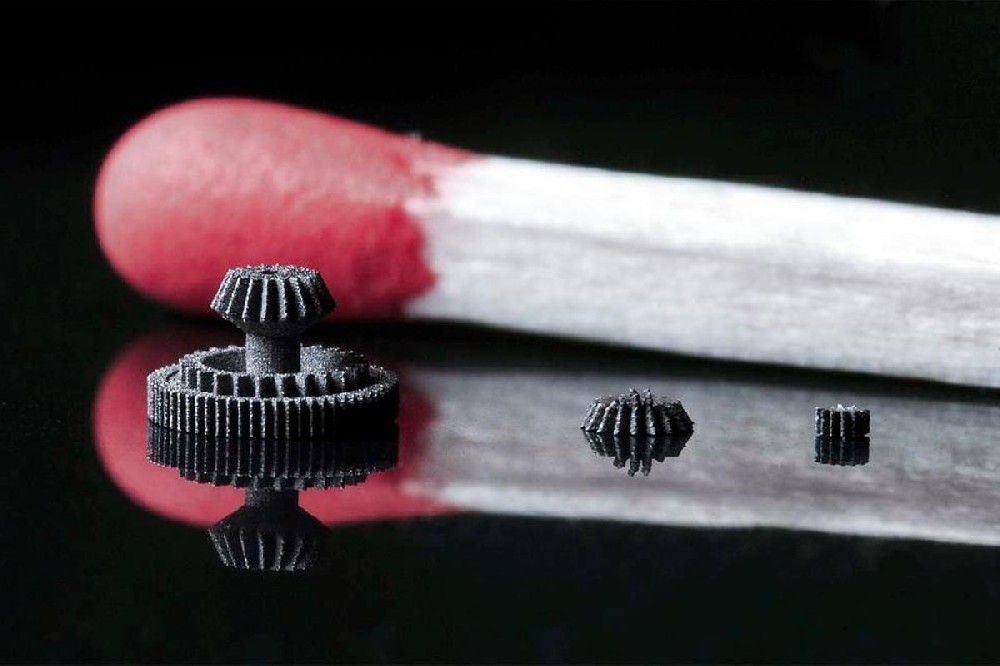
Using micro meter-fine metal powder, MLS can create tiny components and functioning mechanical units
VIEW 7 IMAGES
VIEW GALLERY - 7 IMAGES
Germany-based companies, 3D-Micromac AG, a provider of laser micromachining systems, and EOS GmbH, an e-Manufacturing group, have teamed up to form a new organization dubbed 3D MicroPrint GmbH. The new enterprise is developing a new micro laser sintering technology (MLS) for 3D printing tiny metal components to meet the demands of Makers and professionals alike.
Creating small, yet precise, 3D prints isn’t new, researchers at the Vienna University of Technology have even done so on the nanoscale, but those components are made of resin. 3D MicroPrint’s MLS technology boasts layer thicknesses of under five micrometers with metal materials, but Mandy Gebhardt at 3D-Micromac explains, “We have been processing different layer thicknesses in more than 100 projects with customers from around the globe and many industries. The thinnest layers we have used to build parts are 2 micrometers.”
MORE STORIES

TECHNOLOGY
Spoof-proof system uses radio signatures to enforce nuclear treaties

MUSIC
Acoustic/electronic drumkits cut cable clutter with wireless triggering
According the Gebhardt, the device is Ideal for the medical, jewelery and watch, aerospace, and automotive industries, with the micro parts market estimated at around US$5 billion annually. 3D printing has an advantage over conventional manufacturing processes for these tiny parts, since the tolerances can be just as refined, but the parts can be far more complex.
The two companies have been developing MLS technology since 2006, but not without encountering some challenges. Similar to the direct metal laser sintering process used to print the Tri-D rocket engine, micro laser sintering uses a laser to melt metal powders to form each layer. When 3D printing on such a small scale, the particle size of the metal powder can make a huge difference.

“Work safety is an important issue because this powder size is respirable, and because of the large surface area, it is even more reactive than the one used in known laser sintering solutions,” Gebhardt explains.
The powder particle size of traditional processes is between 30 and 45 micrometers, while the MLS process utilizes particles that are 5 micrometers or less. These tiny particles, in conjunction with a laser spot diameter (the size of the laser beam when it hits the material) that is less than or equal to 30 micrometers, make the tiny prints possible.
The company has been using molybdenum, tungsten, and stainless steel 316L (1.4404) for the tiny prints, but according to Gebhardt, “[3D MicroPrint] has processed high melting pure metals as well as alloys, and [the company] knows that copper and silver work as well. This is the reason why we believe almost any metal can work in this process.” The organization’s research and development is demand driven, so process development for titanium and aluminum is planned for 2014.
Contact:Mr Liu
Mobile:15869109368
Tel:86-571-89967020
E-mail:info@dawopu.com
Address:No151 ,ZiDingXiang Rd, Hangzhou. Zhejiang Province, China